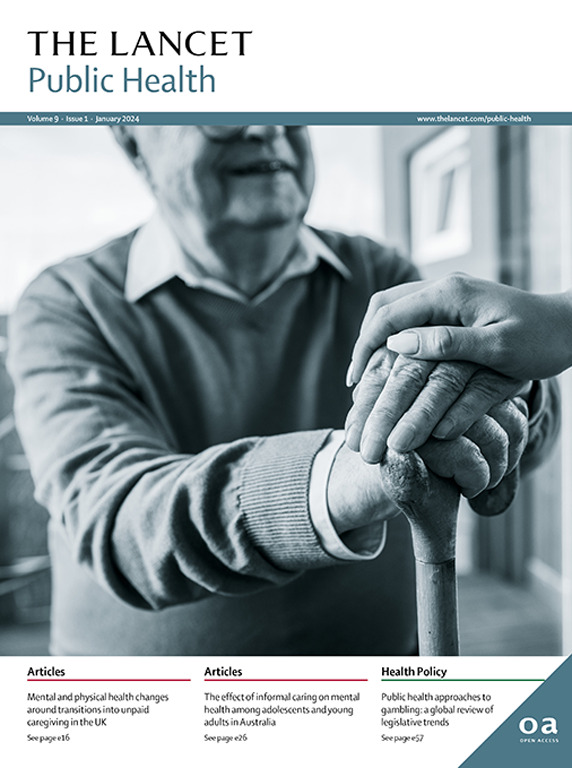不过量地获取阿片类药物
IF 25.4
1区 医学
Q1 PUBLIC, ENVIRONMENTAL & OCCUPATIONAL HEALTH
引用次数: 0
摘要
在世界卫生大会第67.19号决议承认姑息治疗是全面护理和全民健康覆盖整个生命过程的组成部分十年后,对阿片类药物获取的平衡方法仍然难以实现。在减轻与健康有关的严重痛苦方面仍然存在差距,其特点是两种平行的与阿片类药物有关的公共卫生危机:未得到缓解的疼痛大流行和阿片类药物成瘾流行。疼痛大流行在很大程度上是由阿片类药物获取深渊造成的,主要影响到生活在低收入和中等收入国家的5 000多万与健康有关的严重痛苦的人。相反,一些高收入国家受到阿片类药物成瘾流行病的影响。据估计,全世界有3950万人患有阿片类药物使用障碍,其中绝大多数生活在北美。在这一观点中,我们描述了这些平行的危机,认为缓解疼痛是一种全球公共产品,并确定世卫组织会员国和地方行为体的管理作用,以平衡的方式激励全球卫生系统,同时缩小全球疼痛鸿沟,并根据以预防药物滥用(3.5)和全民健康覆盖(3.8)为重点的可持续发展目标目标,无过量地获得阿片类药物。本文章由计算机程序翻译,如有差异,请以英文原文为准。
Towards opioid access without excess
A decade after World Health Assembly Resolution 67.19 recognised palliative care as a component of comprehensive care and universal health coverage throughout the life course, a balanced approach to opioid access remains elusive. Disparities in the alleviation of serious health-related suffering persist, characterised by two parallel opioid-related public health crises: a pandemic of unrelieved pain and an opioid addiction epidemic. The pain pandemic is largely driven by the opioid access abyss and primarily affects over 50 million people with serious health-related suffering living in low-income and middle-income countries. Conversely, several high-income countries have been affected by an opioid addiction epidemic. An estimated 39·5 million people struggle with opioid use disorder worldwide, the vast majority living in North America. In this Viewpoint, we describe these parallel crises, argue for pain relief as a global public good, and identify stewardship roles of WHO member states and local actors to use a balanced approach in galvanising the global health system to simultaneously close the global pain divide and move towards opioid access without excess in alignment with Sustainable Development Goal targets focused on the prevention of substance abuse (3.5) and universal health coverage (3.8).
求助全文
通过发布文献求助,成功后即可免费获取论文全文。
去求助
来源期刊

Lancet Public Health
Medicine-Public Health, Environmental and Occupational Health
CiteScore
55.60
自引率
0.80%
发文量
305
审稿时长
8 weeks
期刊介绍:
The Lancet Public Health is committed to tackling the most pressing issues across all aspects of public health. We have a strong commitment to using science to improve health equity and social justice. In line with the values and vision of The Lancet, we take a broad and inclusive approach to public health and are interested in interdisciplinary research.
We publish a range of content types that can advance public health policies and outcomes. These include Articles, Review, Comment, and Correspondence. Learn more about the types of papers we publish.
 求助内容:
求助内容: 应助结果提醒方式:
应助结果提醒方式:


